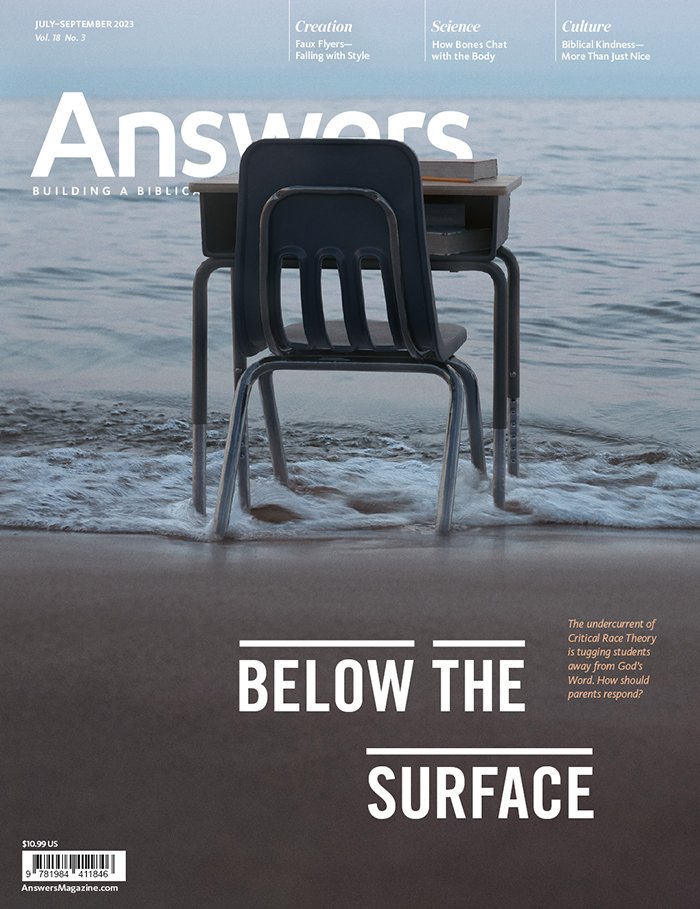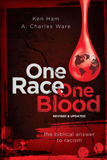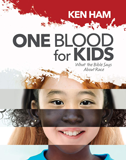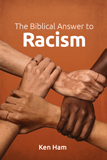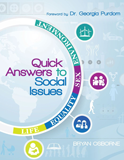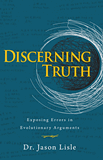Below the Surface
The Undercurrent of CRT in Curriculum
The undercurrent of Critical Race Theory is tugging students away from the truth of God’s Word. How should parents and educators respond?
At least once a year, my husband, kids, and I travel to the Outer Banks of North Carolina for vacation. Because they’ve grown up going to the ocean, our kids, now in middle and high school, know that how the water appears on the surface is not always indicative of what is happening below. The Atlantic Ocean often has strong underwater currents, especially close to hurricane seasons. If you’re not paying attention, the currents can easily pull you farther from the shoreline.
We taught our kids when they were young to identify an easy-to-see object, like our beach chairs, as a reference point. Every few minutes, they were taught to look up at the object on shore and gauge where they were in the ocean. This way they could see if the current had pulled them to one side or farther out from the shore. If needed, they could adjust their position so that the reference point was always right in front of them, never drifting too far from it.
In my 20 years of education, I’ve found that sometimes, like the invisible currents below the surface of the ocean waters, what influences education isn’t always visible from the surface and often causes instruction to drift toward whatever viewpoint is popular in our culture. As a curriculum developer, I know that all curriculum is influenced by the worldview of whoever is writing it and of whoever is teaching it to students. In public education, this undercurrent of influence is almost exclusively geared toward reinforcing a secular worldview, denying God’s Word as the authority.
In recent years, that influence has been tugging on the integration of critical race theory (CRT) into curricula—whether in public schools, private schools, or homeschools. CRT is a dangerous philosophy that denies true biblical equality and undermines the dignity of individuals made in God’s image. Like a current pulls a swimmer farther from the shore, embracing CRT philosophy pulls one farther from the truth of God’s Word. It’s important for parents, educators, and anyone instructing children to keep a watchful eye for its influence on what children are learning.
One Race, One Blood
Throughout the Bible, we are consistently reminded that there is one race—the human race. Acts 17:26 confirms that all people are descendants of Adam and then of Noah: “And he made from one man every nation of mankind to live on all the face of the earth, having determined allotted periods and the boundaries of their dwelling place.” Outward differences in features like our skin tones, eye shapes, and hair textures are insignificant compared to our shared identity as image-bearers of the one true God (Genesis 1:27), born with a sin nature (Romans 5:12) and in need of a Savior (Romans 6:23).
Differences in skin tone, caused by the amount of melanin in a person’s skin, are not indicative of different races. All people are different shades of brown. Some people may have less melanin and appear to have lighter brown skin tones while others may have more melanin and appear to have darker brown skin tones. Due to the genetic potential for variation that God created in human DNA and due to the dispersion of people at Babel, certain features, like lighter or darker skin tones, became characteristic of different people groups.
Those who disregard God’s Word, however, primarily view differences in skin tone as evidence of separate races. Therefore, culture uses social markers to delineate racial groups, using terms such as white, black, and people of color. People have different ethnic and cultural backgrounds—even Scripture acknowledges that in heaven, people of every nation, tribe, and language will worship at God’s throne (Revelation 7:9). But when used to suggest that there are different races of people, these terms do not align with God’s Word.
What Is Critical Race Theory (CRT)?
Critical race theory, or CRT, originated in higher education law classes in the 1970s, gradually being adapted for education beginning in the 1990s. Over the past few years, CRT has become a hot button issue in schools across the nation.
At its roots, critical race theory suggests that racism is woven into all aspects in the United States, including our structures and institutions, leading to systemic racism that impacts minorities.
At its roots, critical race theory suggests that racism is woven into all aspects in the United States, including our structures and institutions, leading to systemic racism that impacts minorities. It is a worldview that divides society into two groups, the oppressors and oppressed. For supporters of CRT, these groups correspond solely to a person’s race. This perception is rooted in the larger idea of intersectionality. Intersectionality proposes that people belong to different groups based on categories, such as their race, gender, and ability, and that these groups can be ranked on a continuum from oppressor to oppressed. For example, within the framework of intersectionality, a white, heterosexual male is likely to oppress others while a black, homosexual female is likely to be oppressed.
CRT seeks to dismantle structures it blames for this supposed systemic racism and prejudice, including structures found in government, society, and even schools. Some CRT proponents go so far as to encourage discrimination against others as a way to correct historical discrimination. Ibram X. Kendi, author of How to Be an Antiracist and a well-known CRT supporter, said that “if discrimination is creating equity, then it is antiracist. . . . The only remedy to past discrimination is present discrimination.”
Equity, as defined by CRT, is not seen as providing fair and equal opportunities for everyone but providing whatever means are necessary, including discriminating against others, to ensure equal outcomes for all. This rhetoric creates a new form of racism against the perceived oppressor class, because CRT holds that racism is so ingrained in our country that white people cannot recognize or address it. Essentially, this belief asserts that people can be racist simply because of their skin tone and once again reaffirms the hallmark of CRT—the struggle between oppressed and oppressor.
CRT itself is discriminatory, insisting that people with lighter skin tones are inherently racist simply because of their genetic make-up and that people with darker tones are automatically oppressed. It defines a person’s identity by physical characteristics instead of our inherent identity as unique individuals, fearfully and wonderfully made by our Creator (Psalm 139:14), who is not concerned with our outer appearance but with our hearts (1 Samuel 16:7). CRT’s dangerous foundational tenets should inspire Christian guardians and teachers to keep a watchful eye for its presence in educational material influencing young people.
Countering True Racism
While CRT is counter to a biblical worldview, we must take care to not diminish events and personal encounters with discrimination. We can approach this responsibly from a biblical worldview in several ways.
- Help children relate instances of discrimination to their root cause: living in a fallen, sin-cursed world.
- Discuss cultures, experiences, and the realities of historical events from different perspectives to help children better understand other people and the world around them, building empathy and appreciation for the beautiful diversity in God’s image-bearers.
- Consider taking advantage of opportunities for children to learn about different people groups, such as participating in cultural events in our communities. You could also take time to explore the history, languages, and customs of communities around the world as children naturally encounter them through the literature and media they are exposed to or the people that they meet.
- Highlight Scripture that provides examples of how believers should engage with others who may appear different. For example, perhaps focus on the parable of the good Samaritan who helped a Jew in need, despite their historical and cultural differences (Luke 10:25–37).
- Emphasize that information encouraging children to make judgments about a person based on their skin tone, appearance, or heritage is wrong.
Examples of CRT in K–12 Education
Some deny that CRT is present in curriculum, insisting that it remains in higher education. The data, however, says otherwise. According to a 2022 study commissioned by City Journal magazine, 62% of 18- to 20-year old respondents indicated that they had either heard or been taught in class, including during high school coursework, that “America is a systemically racist country.” And 69% reported that they were taught or heard that “white people have white privilege,” while 57% reported that they were taught or heard that “white people have unconscious biases that negatively affect non-white people.” So how are students taught these concepts and when are they exposed to them throughout a school day?
While you most likely won’t find a class or lesson named “Critical Race Theory for Kids,” you often find CRT in the way curriculum is written or in its resources. For example, you might find a suggested book, such as Not My Idea: A Book About Whiteness, currently being used in some schools and available in many libraries across the country. This picture book tells young children that their skin tone influences how they see the world and how the world reacts to them. The book even uses a picture with satanic references to represent “whiteness.”
CRT is also present in the way history or social issues are discussed in the classroom. Using a historical topic, like slavery in the United States, a curriculum could suggest that white people continue to preserve systemic racism, as was the case in the Emancipation Curriculum used in Buffalo, New York. Or students might even be encouraged to self-segregate themselves. For example, in California, New Jersey, and other places across the country, students have been guided to rank themselves as oppressor or oppressed based on their race. Additionally, opposing arguments or viewpoints counter to a pro-CRT perspective may be excluded from or discredited during instruction. In the City Journal study, 68% of respondents who reported encountering social justice- or CRT-related concepts in high school indicated that opposing arguments were either not taught or were presented as not respectable.
But CRT also shows up in things like teacher education programs, conferences, and trainings. Conversations with one of my educator friends revealed exactly how this looks. Jeremy Wright, a veteran public-school teacher in Virginia who frequently speaks out against CRT at school board meetings and has been interviewed by Fox News and other national news organizations, described a school equity training session he attended. During this training session, he was required to watch a video in which white and black people were shown engaging in a foot race. The white person got a head start and easily completed the race while the black person had many obstacles, fell down, and didn’t finish the race.
After watching the video, Wright said he felt awful seeing others get hurt or be treated unfairly. The trainer then took a “privilege inventory” to identify the trainees’ intersectionality and how being part of oppressor or oppressed groups might affect their teaching, reinforcing a key tenet of CRT that racism is inherent in anyone viewed to be an oppressor. Wright recognized that the video created a purposeful emotional argument, using people’s feelings of empathy to substantiate teaching rooted in CRT dogma.
Even Christian school educators and homeschoolers should be watchful for CRT. If your curriculum is used primarily in public schools, it may include content influenced by CRT. Additionally, free worksheets or online games and lessons used to supplement curriculum could contain questions, pictures, or activities that reinforce CRT. Conferences, educational blogs, and podcasts could also feature speakers and writers that incorporate tenets of CRT.
Effects of CRT on Students
When both curriculum and teacher training reinforce CRT, it affects instruction and, ultimately, the students. Shame, guilt, anger, victimhood, confusion—all of these are byproducts of teaching children to view the world through the dogma of CRT and not the authority of Scripture. Teaching students that structures and systems are responsible for bad things that happen to them reinforces that people aren’t responsible for their own decisions or behavior. This unfortunate consequence has lasting implications that teachers like Wright are warning others about. “Minority students are going to suffer the most from this,” Wright predicts. “When you teach students that the system is against them, they have no motivation to learn. They are not going to try to work. They are not going to try to improve themselves.”
“Proponents [of social justice causes like CRT] tend to downplay the sufficiency of Scripture: to them, racism is not a heart issue or personal sin; it is a ‘systemic’ problem. Therefore, reform is the solution, not repentance.”
It’s no wonder that teachers, parents, and students across the country are speaking up in large numbers at school board meetings and petitioning leaders to develop laws and regulations aimed at curbing CRT in schools and curricula. This resistance is necessary because even more devastating than CRT’s educational effects on young people are its insidious spiritual consequences. As Voddie Baucham, dean of theology at African Christian University in Zambia, states in his book Fault Lines, “Proponents [of social justice causes like CRT] tend to downplay the sufficiency of Scripture: to them, racism is not a heart issue or personal sin; it is a ‘systemic’ problem. Therefore, reform is the solution, not repentance.”
When students are reduced to the amount of melanin in their skin and placed into groups based on power and oppression, they begin to see themselves as part of a collective. Sadly, this is far from viewing themselves as individuals created for a purpose and intimately known by the Creator. Individuality is essential to understanding the gospel, the need for salvation, and the personal decision that everyone must make to receive or reject Christ as Lord and Savior.
Keeping Watch
We can take a few practical steps to safeguard the hearts and minds of our children against dangerous anti biblical philosophies.
- We can watch over the educational materials presented to children in our communities, schools, and homes. This means requesting samples of curriculum or viewing available materials and content through the lens of Scripture to discern if it contradicts God’s Word.
- We can hold school boards, officials, principals, and teachers accountable by voicing our concerns in public forums, petitioning leaders, and voting for candidates who uphold a biblical worldview.
- We can teach our children to recognize CRT by pointing it out in the information they consume and then teaching them a biblical perspective.
- We can pray for our students, teachers, and anyone involved in making educational decisions in our local schools or individual homeschools. We also can encourage those who are searching for biblically sound materials by pointing them to appropriate educational resources, such as Answers in Genesis’ Answers Bible Curriculum for Homeschool, One Blood for Kids.
Not Drifting Away
Christians should always condemn behavior that seeks to divide and hurt others while recognizing the source of this harmful behavior—our own sinful nature.
When viewed through a biblical lens, CRT is anti-biblical and ignores the foundational truth of the gospel. We must acknowledge that discrimination based on markers such as appearance or country of origin, in both historic and present circumstances, is sinful. We all bear the image of our Creator and are part of one human race. Christians should always condemn behavior that seeks to divide and hurt others while recognizing the source of this harmful behavior—our own sinful nature inherited from Adam.
Yet dismantling man-made systems and structures as CRT proposes, doesn’t address the root cause of sin in the heart of every person. The only answer to our sinful behavior is not found in further dividing people into groups based on the man-made construct of race and perceived power, but in pointing people to the restorative work of Christ on the cross.
The current of CRT may be rippling under the surface of education, but if we keep our eye on our reference point, we can help prevent our students, communities, and society from drifting away from the unmovable foundation of God’s Word.
Answers Magazine
July–September 2023
The undercurrent of Critical Race Theory is tugging students away from God’s Word. How should parents respond?
Browse Issue SubscribeRecommended Resources

Answers in Genesis is an apologetics ministry, dedicated to helping Christians defend their faith and proclaim the good news of Jesus Christ.
- Customer Service 800.778.3390
- © 2024 Answers in Genesis



